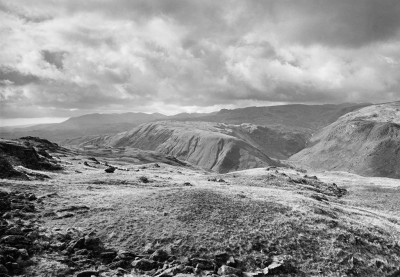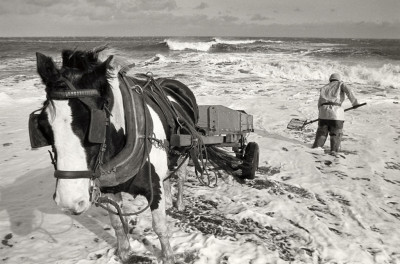
For Druridge
Isabela Jedrzejczyk
John Davies
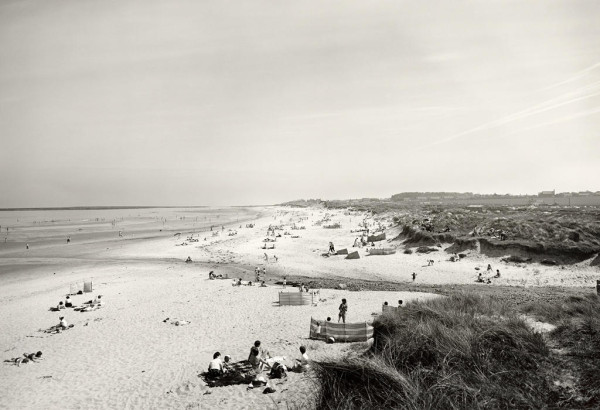
For Druridge
Isabela Jedrzejczyk |
John Davies
- Photographic
- Coastal Locations
- Communities
- Northern Documentary
- Place
- Popular Cultures
- UK Documentary
- Politics & Struggles
- 1980 – 1989
- Northumberland
- UK
In the early 1980s, Druridge Bay, a five-mile stretch of unspoilt Northumberland coastline, faced the prospect of significant change due to proposed plans for a nuclear power station. In response, Side Gallery commissioned photographers Isabela Jedrzejczyk and John Davies to document the natural beauty and character of the area. Their work, titled For Druridge, captures the essence of this unique landscape, highlighting its expansive dunes, vast skies, and the daily lives of those connected to the bay.
The photographs from this project showcase a land of wind-swept dunes and rolling skies, miles of sea and sand, calm waters, turbulent waves, rocks, and pools. They also depict the surrounding farms, hamlets, fields, fishermen, beachcombers, and day-trippers, offering a comprehensive visual narrative of Druridge Bay's environment and community during that period.
The For Druridge project not only served as an artistic endeavour but also played a role in raising awareness about the potential impact of industrial development on the bay's natural landscape. The proposed nuclear power station plans were eventually shelved in 1989, following public opposition and changes in government policy on nuclear power. The photographs remain a testament to the area's natural beauty and the community's connection to the landscape, preserving the memory of Druridge Bay as it was during a time of potential drastic transformation.
Isabela Jedrzejczyk is a documentary photographer whose work explores the lives and landscapes of working-class communities, particularly in the North East of England. Born in London, she studied at Nottingham Trent University before moving to Newcastle in 1977 to work at Side Gallery. She soon started producing work with the Amber Collective, contributing to the growing AmberSide Collection.
Originally known for her landscape photography, Jedrzejczyk turned her focus to people and places with strong social and historical significance. In 1980, she produced Jungle Portraits, a series of portraits taken at the Northumberland Arms in North Shields, a pub known locally as The Jungle and a gathering place for the fishing community.
Now living in a village near Carlisle, Cumbria, Jedrzejczyk is known for work that reflects an interest in capturing the character and atmosphere of everyday spaces.
John Davies, born in 1949 in Sedgefield, County Durham, is a British photographer renowned for his expansive black-and-white landscapes that document the evolving industrial and post-industrial environments of Britain. After studying photography at Nottingham's Trent Polytechnic, graduating in 1974, he initially focused on rural landscapes before turning his attention to urban settings in the early 1980s. His work often juxtaposes natural and industrial elements, providing a comprehensive perspective on the transformation of the British landscape.
Throughout his career, Davies has received numerous accolades, and his photographs have been exhibited internationally, including at prestigious institutions. Notably, he collaborated with the Amber Film & Photography Collective on multiple projects like Cumbrian Landscapes and For Druridge, creating work which reflected his commitment to documenting the interplay between human activity and the natural environment.
"I use the photographic process as a means of exploring the landscape and I am especially interested in the physical formations of the land and the way in which the forces of nature effect its shape." - John Davies
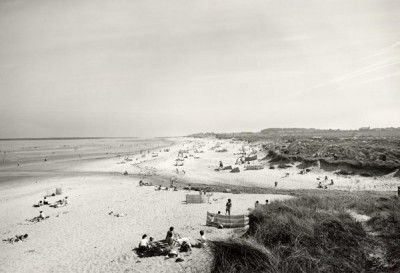
For Druridge
- Ref: 038-009-LBW-Davies
- Date: 1983
- Artist: John Davies
- Copyright: © John Davies

For Druridge
- Ref: 038-002-LBW-Davies
- Date: 1983
- Artist: John Davies
- Copyright: © John Davies
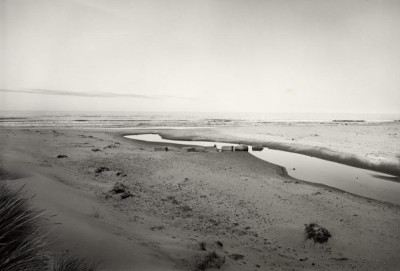
For Druridge
- Ref: 038-003-LBW-Davies
- Date: 1983
- Artist: John Davies
- Copyright: © John Davies
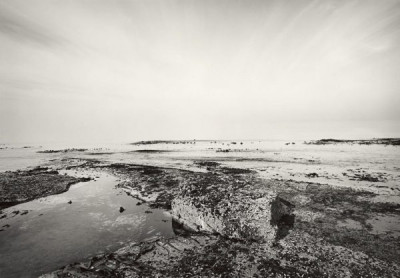
For Druridge
- Ref: 038-004-LBW-Davies
- Date: 1983
- Artist: John Davies
- Copyright: © John Davies
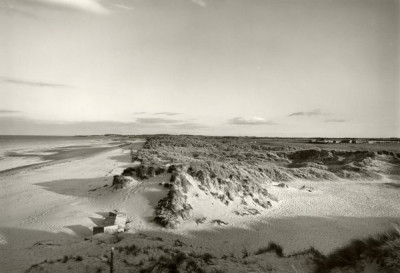
For Druridge
- Ref: 038-001-LBW-Davies
- Date: 1983
- Artist: John Davies
- Copyright: © John Davies
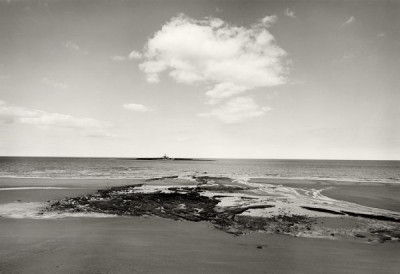
For Druridge
- Ref: 038-006-LBW-Davies
- Date: 1983
- Artist: John Davies
- Copyright: © John Davies
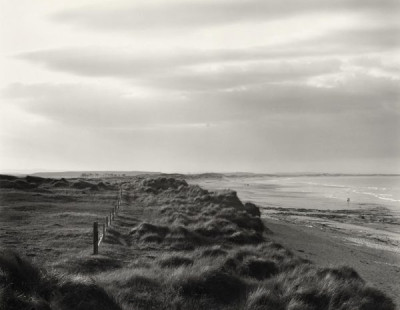
For Druridge: The University have been doing research on the bay into wave power and currents in the event of pipe laying, 1983
- Ref: 038-019-LBW-Jedrzejczyk
- Date: 1983
- Artist: Isabela Jedrzejczyk
- Copyright: © Isabela Jedrezejczyk
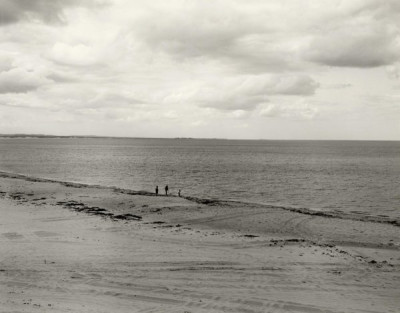
For Druridge: The Bay at Cresswell
- Ref: 038-010-LBW-Jedrzejczyk
- Date: 1983
- Artist: Isabela Jedrzejczyk
- Copyright: © Isabela Jedrezejczyk

For Druridge
- Ref: 038-007-LBW-Davies
- Date: 1983
- Artist: John Davies
- Copyright: © John Davies
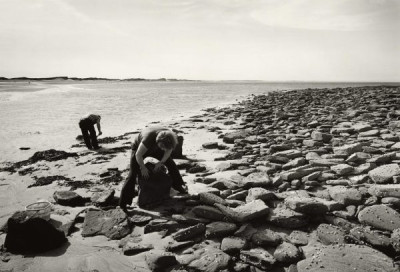
For Druridge
- Ref: 038-005-LBW-Davies
- Date: 1983
- Artist: John Davies
- Copyright: © John Davies

For Druridge: Digging for Worms, Fishermen Up at Hadston Carrs, North End of the Bay, 1983
- Ref: 038-013-LBW-Jedrzejczyk
- Date: 1983
- Artist: Isabela Jedrzejczyk
- Copyright: © Isabela Jedrezejczyk
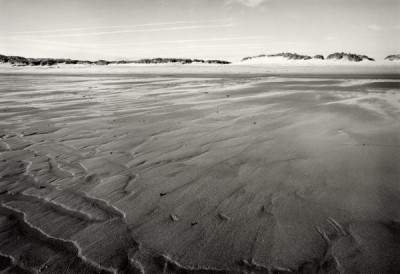
For Druridge
- Ref: 038-008-LBW-Davies
- Date: 1983
- Artist: John Davies
- Copyright: © John Davies
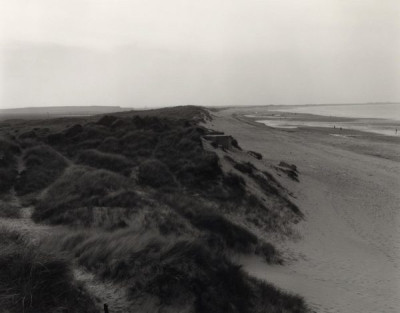
For Druridge: Twilight, The Man-Made 'Leaking' Lake Just Visible, 1983
- Ref: 038-016-LBW-Jedrzejczyk
- Date: 1983
- Artist: Isabela Jedrzejczyk
- Copyright: © Isabela Jedrezejczyk
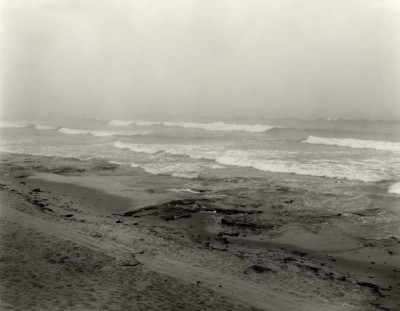
Druridge Bay: The Nuclear Reactor is to be Built On Top Of 199 Billion Tons of Coal, in an Area Where Pits are Being Closed and Unemployment Rising, 1983
- Ref: 038-011-LBW-Jedrzejczyk
- Date: 1983
- Artist: Isabela Jedrzejczyk
- Copyright: © Isabela Jedrezejczyk
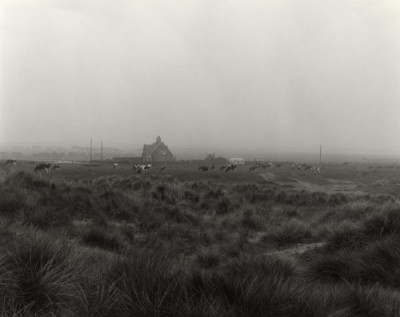
For Druridge: Hepscott Farm is Within the Area the Central Electricity Generating Board are Hoping to Purchase, 1983
- Ref: 038-012-LBW-Jedrzejczyk
- Date: 1983
- Artist: Isabela Jedrzejczyk
- Copyright: © Isabela Jedrezejczyk
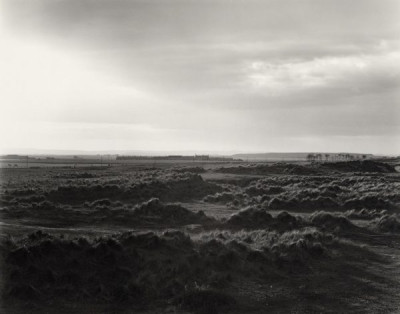
For Druridge: Druridge Hamlet Itself, Back of the Dunes
- Ref: 038-020-LBW-Jedrzejczyk
- Date: 1983
- Artist: Isabela Jedrzejczyk
- Copyright: © Isabela Jedrezejczyk
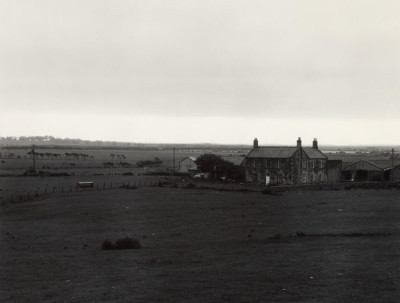
For Druridge: Hepscott Farm, Used as a Base for Norther Aggregates Who Have Been Removing Sand from the Bay for Years, 1983
- Ref: 038-018-LBW-Jedrzejczyk
- Date: 1983
- Artist: Isabela Jedrzejczyk
- Copyright: © Isabela Jedrezejczyk
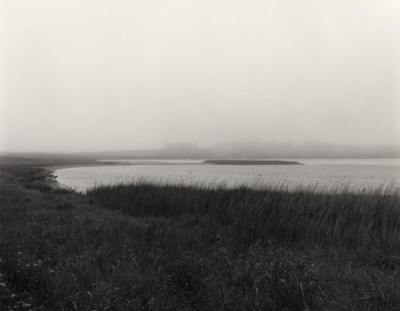
For Druridge: Blackmoor Farm on Cresswell Ponds, 1983
- Ref: 038-017-LBW-Jedrzejczyk
- Date: 1983
- Artist: Isabela Jedrzejczyk
- Copyright: © Isabela Jedrezejczyk

For Druridge: Blakemoor Farm, 1983
- Ref: 038-015-LBW-Jedrzejczyk
- Date: 1983
- Artist: Isabela Jedrzejczyk
- Copyright: © Isabela Jedrezejczyk
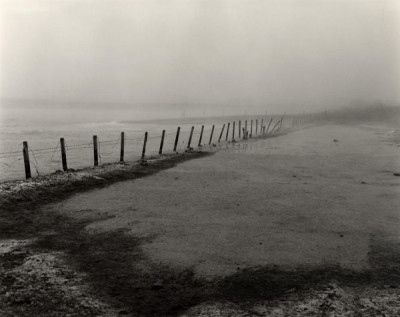
For Druridge: Warkworth Lane, 1983
- Ref: 038-014-LBW-Jedrzejczyk
- Date: 1983
- Artist: Isabela Jedrzejczyk
- Copyright: © Isabela Jedrezejczyk
Related Works

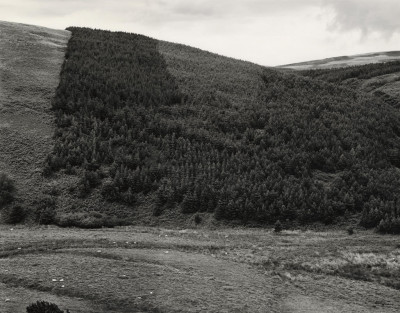
Northumberland Landscapes
Isabela Jedrzejczyk
Photographic
